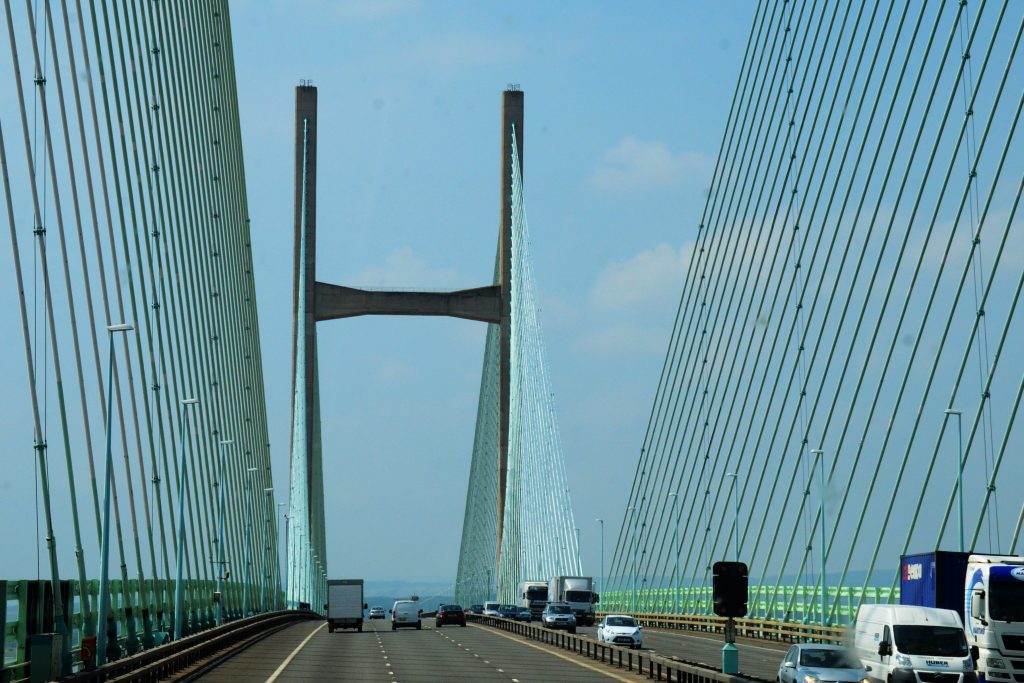Construction of the Second Severn Crossing
The first pivotal project delivered by Kaymac was the diving contract for constructing the Second Severn Crossing, which was renamed in July 2018 and is now known as The Prince of Wales Bridge.
The bridge comprises a 5.2 km crossing of the Severn Estuary between Severn Beach and New Passage. The crossing itself consists of a 0.9 km cable-stayed bridge with the main span being 0.5 km long and gives a clearance of more than 37 m over the highest tide level. The viaducts
connecting the bridge to the shores are 2.2 km and 1.9 km to the Gwent and South Gloucestershire
sides respectively.
Joint Venture Lang GTM commissioned Kaymac as the sole diving contractor for the project to assist in the caisson preparation and installation. The bridge’s foundations comprised 37, 35 m long precast Concrete caissons, each weighing up to 2,000 tonnes. Before these caissons were moved into their final position, Fabric formwork, namely Proserve mattress units, were positioned onto the underside of the Caissons using high-strength webbing and held tight with stretch webbing so that they would be less likely to be damaged during positioning. This webbing was designed to break during the filling procedure.

All the concrete mattresses had internal porous diaphragms to help to distribute the stress to the outer walls and to aid filling. Each unit was filled from one end by Kaymac divers. Internal pressures were monitored from the vent tubes to confirm the complete filling of each unit. The system was used to bound the caissons onto the dredged rockhead and was designed to be part of the bearing area of the foundation. Once the units had been filled, the caisson supports were removed, and the caisson cells were then tremi filled with concrete. The installation was successfully completed while navigating a 12-metre tidal range and short bottom times for divers during slack water.
Construction of The Second Severn Crossing started on 26th April 1992 and took four years to complete; Prince Charles officially opened the bridge on 5th June 1996. The bridge opened as a toll-paying bridge which was only collected Westbound the price to cross the bridge when the Prince of Wales Bridge opened was £3.80 for category 1: cars, £7.70 for category 2: small busses and vans under 3tonne, and £11.50 for category 3: Large buses and good vehicles. The price increased over the years- its highest in 2017 when it was up to £20 for category 3. In July of the same year, it was announced that the toll was going to be abolished at the end of 2018; the Welsh Government claimed that the abolishment is set to be a massive benefit to the South Wales economy and boost it by more than £100m a year.
The Second Severn Crossing was built to create ease as one would need to leave the M4 to cross the old Severn Bridge; the Prince of Wales Bridge is connected to the M4, making a shorter journey for commuters; it is also wider than the old Severn Bridge meaning it carries more traffic creating fewer delays for commuters, the old Sever Bridge is still in use today along with the new bridge.











